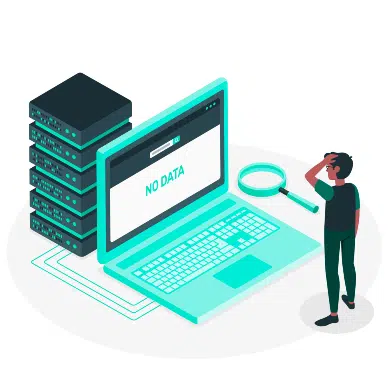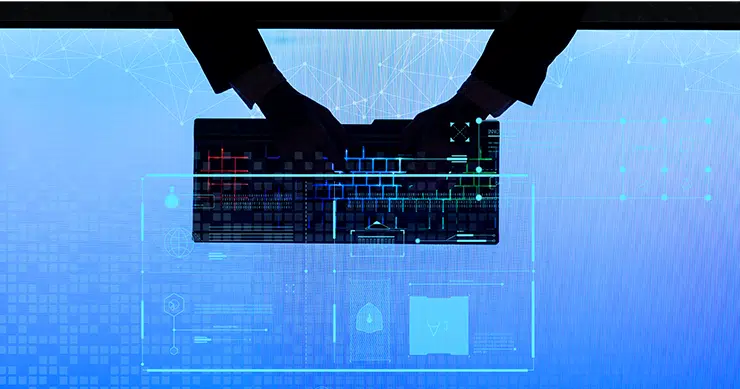Cybersecurity is top of mind for most businesses today. A single data breach can compromise your ability to operate, generate revenue, and ruin the reputation you’ve spent years building with your clients, business partners, and vendors.
There’s no avoiding digital risk. In today’s hyper-connected world, they will continue to grow at an alarming rate. However, that doesn’t mean there aren’t plenty of ways to minimize these risks.
It’s important your cybersecurity teams have a cyber risk management program in place for this purpose. While you can hire the services of third-party consultants, you may lose a certain level of control over your organizational risks. Plus, having some base level of internal knowledge plays an important role in helping you understand the risks you’re up against.
It’s heavily recommended to supplement regular checkups with a complete cyber risk management platform, which can also be offered through SaaS platforms. Many cyber risk management tools are automated now, giving you continuous monitoring, testing, and controls at a minimal cost.

Automation in Security Risk Management Tools
When discussing cyber risk assessment tools, the “feature of all features” to look for would be automation. Automation has totally revolutionized the cybersecurity landscape, offering organizations a proactive and efficient strategy to bolster their defenses against continually evolving cyber threats (which are also driven by automation).
Advantages of Automated Cyber Risk Management Software
- One of the primary advantages offered by automated tools is the concept of continuous monitoring and surveillance. Unlike periodic manual assessments, automated cyber risk management provides organizations with real-time threat detection and response capabilities. This proactive approach minimizes the window of vulnerability.
- Efficient risk and vulnerability assessment is another area where automation shines. Traditional manual assessments are often resource-intensive, making it challenging to conduct frequent and comprehensive scans. Automated vulnerability assessment tools alleviate this challenge by scanning IT environments regularly without too much human intervention. They promptly identify and highlight the most up-to-date vulnerabilities, enabling swift remediation and reducing the risk of exploitation or breach.
- Automation extends to real-time incident response as well. With automation, you can rest assured that predefined criteria will be carried out in case of a cyber incident. This rapid response capability is crucial in containing and mitigating the impact of cyber incidents and preventing them from escalating. Furthermore, automated tools facilitate compliance management by automating evidence collection, compliance reporting, and adherence to regulatory frameworks.
- Scalability is a significant advantage of automated tools. Automated solutions can adapt to the evolving IT landscape and accommodate the increasing complexity of cyber threats. Additionally, automated risk management solutions scale up as businesses grow. In light of this, customization and flexibility are essential to align the tools with the specific cybersecurity needs and risk profiles of the organization.
Read on to learn what we feel are the critical features your next cyber risk management platform should include.
Critical Features of a Cyber Risk Management Platform
A cybersecurity risk assessment is far from a simple effort; it’s a multifaceted process that looks at various ways data theft and compromise can occur within an organization. What should an IT security department look for in a set of cybersecurity risk management tools and capabilities?
1. Vulnerability Assessment (VA)
There’s no better weapon against cybercrime than awareness. Much like how an antivirus program protects your personal computer, a vulnerability assessment is one of many cybersecurity risk assessment tools that can alert you to potential issues before they have a chance to cascade into a larger problem.
What does a vulnerability assessment do?
- VA software scans your IT environment for security vulnerabilities regularly.
- Some solutions even have features directed at legal compliance in case you’re performing audits or need specialized scans for specific reasons.
- They give full visibility to your teams, and may even include a cyber risk dashboard to generate regular reports to let you know whenever a new vulnerability emerges.
Vulnerability assessment can be expensive to do on your own, and scaling up with a growing IT landscape can be challenging without a scalable, cloud-based solution.
2. Measure Cybersecurity Strength
Keeping tabs on the effectiveness of your cybersecurity efforts is an essential part of risk assessment. After all, detecting a problem is only the start.
Industry frameworks and security ratings offer companies a data-driven, quantifiable method to measure cybersecurity performance. These ratings provide a benchmark that can be used as part of a cybersecurity risk assessment to demonstrate internal and external compliance.
Security performance can be judged on a variety of factors, some of which can be done externally and do not require deep access to a company’s system. These may include:
- Determining if a company has experienced a data breach or compromised system
- Identifying if any suspicious activity is occuring
- Looking at what kind of due diligence a company is performing to protect itself
- Assessing how a company approaches incident response
IT teams can even compare its own performance with that of industry competitors and track its progress through accessible cyber risk dashboards. Having a clear picture of where you stand with regards to cybersecurity helps you reduce threats and cover some of your blind spots.
3. Using Built-In Cyber Risk Management Tools
In an ideal world, every business would have a unified, comprehensive approach to cybersecurity that conveniently covers all your needs. In reality, this challenge is far more complex with many moving parts that could change on a daily basis.
The reality is: most companies have dedicated cybersecurity budgets and may need to work with a vendor-provided solution to improve detection capabilities, stay compliant, and minimize risk.
It’s no secret that companies relying on legacy cybersecurity solutions, like spreadsheets, are struggling to keep up with the breakneck speed of this industry. Keeping track of the latest developments, vulnerabilities, regulatory requirements, and other essential metrics is no easy task without a large budget and a seasoned cybersecurity team.
That’s why companies are turning to built-in cyber risk management tools like Centraleyes to streamline risk management. With aggregated dashboards, cybersecurity frameworks, and a direct pulse into the latest trends, vulnerabilities, and other industry-specific data—there’s no easier way to stay on top of cyber risk management.
4. Penetration Testing
Penetration testing, sometimes referred to as “breach and attack simulation,” is another great way to ensure your cybersecurity program is capable of protecting your business.
This approach uses “white hat hackers” to simulate an attack by breaking into your system to identify where your cybersecurity is lacking. This process is performed at regular intervals and serves as an invaluable tool to validate your cyber readiness.
A cyber risk management program can extend this capability through breach and attack simulation (BAS) software. BAS essentially automates penetration testing by continuously running simulated attacks. You can easily find gaps in your cybersecurity defenses this way.
Start Getting Value With
Centraleyes for Free
See for yourself how the Centraleyes platform exceeds anything an old GRC
system does and eliminates the need for manual processes and spreadsheets
to give you immediate value and run a full risk assessment in less than 30 days
Streamline Your Cyber Risk Management With Centraleyes
Are you worried about the state of your cybersecurity defenses? You’re not alone. An overwhelming 78% of surveyed companies say cybersecurity was a serious point of weakness for their organization.
Gain full visibility and measure your company’s exposure to the latest cyber risk with Centraleyes. Our automated cyber risk management platform gives you everything you need to track, organize, and improve, so you can stay ahead of the latest cybersecurity threats.
Book your demo and see why our cyber risk and compliance platform is the go-to solution for large industries like retail, insurance, and education.





